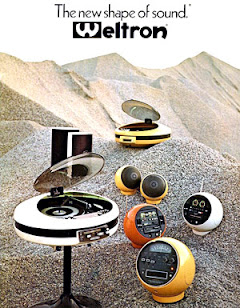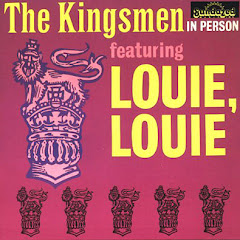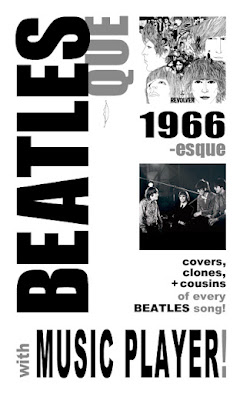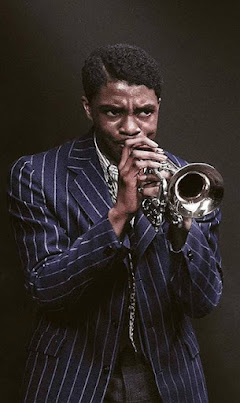of classic Surf Rock
+ all its modern disciples!
now brings you the actual, all-inclusive history of Rock'n'Soul music, with Music Players.
▶ Music Player Checklist
Surf Music kept the Rock movement alive from its original Rock'n'Roll origins into the British Invasion, and continues today.
Here are two Music Players charting that enduring influence on Rock history.
Music Player Quick Links:
𝟭 SURF ROCK: : the First Wave of the 1960s
𝟮 SURF ROCK Disciples: from 1962 to today
Each Music Player is in chronological order, from the '50s to the present.
Tidal Waves:
1958-1964
by Tym Stevens
Hear the unlimited Playlist here.)
This first Music Player covers the initial rise of Surf Rock from 1958 to its mainstream peak in 1964, in chronological order.
The rhythm sections made it Roll but guitars made it Rock.
There was a bristling edge to those pulsing strings that was unearthly yet dirty, as ebullient as it was evil. The stinging leads in those first 1950s Rock'n'Roll> songs jolted every kid in their tennies and rung them like tuning forks.
Many unsung heroes electrified the star's hits: Charlie Christian (Bennie Goodman), Scotty Moore (Elvis Presley), James Burton (Ricky Nelson), Cliff Gallup (Gene Vincent), Paul Burlison (Johnny Burnette Trio), Hubert Sumlin (Howlin' Wolf), Joe Maphis (Wanda Jackson), Danny Cedrone (Bill Haley), and many more. Chuck Berry> broke through because he was able to write and sing as well as he played. But slowly, the guitarists started to get the limelight of their own.
Two of the new Guitar Stars paved the course. Link Wray, sartorial sharpie in a pompadour, was the sonic equivilent of a knifefight. Naturally his breakout was the moody instrumental "Rumble". His hard reverbing strings and prickly chords would open up the door to Surf, Garage Rock, Hard Rock, Heavy Metal, Punk, and beyond. His peer Duane Eddy tuned his weapon to echo a brutal twannng that would mug you as soon as look at you. His rocking take on Henry Mancini's "Peter Gunn Theme"> launched a thousand covers and clones. Their sound and its attitude paved the wave of instrumental breakdown that followed.
Now the undercurrents churned to the surface with the rise of guitar-driven instrumental rock bands. Riff hits like "Raunchy" and "Tequila" roiled a swell of instro acts by 1959 like Santo And Johnny, The Vampires, The Montereys, Sandy Nelson, and The Frantics. This cascaded into the huge success of The Ventures' "Walk Don't Run" (1960), a sunny island melody on clanging guitar with a rolling drum break that brought the rogue wave into vogue.
The underflow is in motion, even if the mainstream hadn't reeled in the notion. They were too busy trying to sink Rock'n'Roll at the dawn of the '60s. And with the almost simultaneous loss of most of its singing figureheads (to the Army, death, God, or marrying your underage cousin), it seemed to be capsizing itself. Maybe this new punk music had only been a fad after all, like the quaking straights had been shreiking.
But the flame was kindled in the beach fires of the budding surf communities of southern California. The Pacific sport had hit the beaches and swept up the young with it. Kids practicing in garages began pounding out their covers of Rock'n'Roll and Rhythm'n'Blues in beach houses and party clubs, and then surfed the rest of the time. One of these guys, a Lebenese fan of Hank Williams and Mediterranean melodies, had an epiphany.
Dick Dale wanted to channel the roaring rush of power he got from surfing through his amplifier. He worked with nearby guitar maker Leo Fender to develop an amp that could project and withstand his aural assault. After myrad exploded amps they developed the Fender amps that rockers use to this day. Leo also came up with the Fender Reverb Unit, a crucial pedal that Dale used to create the signature tough-echo Surf Music sound. Dale rode the crest of fame up and down the west coast, christening acolytes by the score. The new wave of Rock had risen.
Instro bands worldwide caught a ride. Surfin' the USA were The Lively Ones, The Sentinels, The Surfaris, The Challengers, and The Trashmen. From the UK, idiosyncratic producer Joe Meek streamed The Tornados, The Shadows, and The Outlaws (with Ritchie Blackmore). "Catch a wave/ and you're riding on top of the world."
The novice narrative tells you that Surf was a local Cali scene that subsided. In reality, it was reflected worldwide and has never really stopped. Surf had liberated Rock in a way that chartwatchers and fadflits miss: it democratized Rock by lacking vocals and including world melody styles. It became a purely musical language beyond borders that could include anyone playing their music in its style. For every Cali band that imagined surfing in Mazatlan, Hawaii, and Bangalore, there were world acts likewise teeming with California dreaming.
Rolling in on the flip were The Spotnicks and The Noise Men (Sweden), The Twangies (Indo-Rock from the Netherlands), The Skyliners (Belgium), Les Crescendos (Canada), and Los Sleepers (Mexico). The Ventures had as much impact on Japan as The Beatles would everywhere else, inspiring the 'Group Sounds' guitar bands like The Spiders, The Quests, The Pinky Chicks, and The Golden Cups. Spain cruised the slews with Equipe 84, Los Sirex, Los Continentales, and 4 Jets.
Surf also advanced Rock in another way. Like Jazz and Bluegrass before it, Surf brought chops, speed, and diversification through an exploratory instrumental style. (Psychedelia would extend this as a response to Free Jazz.) It amplified and intensified Rock pace and power into a fierce surge beyond the gallop of Rockabilly, mapping the course for every single harder Rock form that would follow.
in THE MONKEY'S UNCLE (1965).
But if instros set the mood, vocals set the scene. The tides of Surf really broke nationally when The Beach Boys and Jan And Dean wrote Pop postcards about the surfari. The harmony hooks and slang lyrics pulled in the popular imagination with dreams of this sunshine fantasia. One deeply profound sea change from this financial windfall was the recentralizing of the recording industry from New York to Los Angeles. There, in sunbaked new studios, young upstarts like producer Phil Spector and Brian Wilson> pipelined hits like the tides, with the brilliant L.A. session mob "The Wrecking Crew". They inspired and competed with each other with classics at a ferocious clip.
The torrents tumbled laterally. Spector's astute arranger Jack Nitzsche literally scored a hit with the majestic "The Lonely Surfer" (1963). He wasn't the only composer so inspired. Surf had become a whirlpool of stinging echo guitar, tribal rhythms, Spanish flamenco inflections, Latin claves, Mediterranean and Middle Eastern and Polynesian melodies, and often intense horns. It was cinematic and cosmopolitan in ways that film and TV composers quickly channeled.
In London, former Rock/Jazz combo leader John Barry> tersed up this heady mix into his first film scores. His bold move of placing Vic Flick's severe Surf lead upfront gave the JAMES BOND films their cutting edge. Quick on his wave was Ennio Morricone, who deconstructed all of these new pop influences into a darker avant tsunami of his own. His textural and experimental scores for the Italian westerns> and thrillers ricocheted with the hard clang (and whistle) of Alessandro Alessandroni; from NAVAJO JOE and THE GOOD, THE BAD, AND THE UGLY, to DANGER: DIABOLIK and ONCE UPON A TIME IN THE WEST.
Surf's success opened the floodgates of Beach Movies, often starring Annette Funicello and Frankie Avalon, which projected the technicolor fantasy to every shore, and included guest performances by hit Pop artists. The GIDGET books and films led to the TV series starring newcomer Sally Field. [The trend of combing beach culture continued into later films like AMERICAN GRAFITTI (set in Cali', 1962), FAST TIMES AT RIDGEMONT HIGH, POINT BREAK, and BLUE CRUSH; and TV shows like Magnum P.I., Miami Vice, Baywatch, and Laguna Beach.]
Women have been part of every form of Rock and consistantly been ignored like they weren't. In truth, one of the very first Surf songs to break was Kay Bell And The Tuffs' "(The Original) Surfer Stomp" (1961). And like their brothers, plenty of vocal groups like The Honeys, The Beach Girls, and The Powder Puffs blitzed the spritz.
But women played Surf music, too. 13-year-old Kathy Marshall tore it up in clubs as guitarist for Eddie And The Showmen but she was never recorded.> Lead guitarist Chiyo Ushi at least got that shot with The Crescents' "Pink Dominos". Germany's Peter Reese And The Pages featured Helga Gwiasta on Fender Jazzmaster. And all-female bands rode toes on the nose, as well: The Pleasure Seekers (with teenaged Patti and Suzi Quatro) caroused the proto-Garage classic "What A Way To Die" (1964); The Continental Co-ets' reverberated with "I Don't Love You No More"; and the great Char Vinnedge's lead snarl fueled The Luv'd Ones' surfstrumental "Scratchy".
in MUSCLE BEACH PARTY (1964).
Surf floated all boats. Soul songs by The Isley Brothers, The Mad Lads, Dee Dee Sharpe, and Johnny Otis crashed the splash. Duane Eddy's "Your Baby's Gone Surfin'", Hal Blaine's "Dance To The Surfing Band" and Al Casey's "Surfin' Hootenanny" were all actually sung by the dynamic Darlene Love And The Blossoms. There were covers of The Beach Boys by The Tymes, The Orions, and The Supremes. And the osmosis was fluid, as The Trashmen's classic hit "Surfin' Bird" was a combined cover of The Rivingtons' "Papa Oom Mow Mow" and "The Bird's The Word".
Riding the wave were albums like "Bo Diddley's Beach Party" (1963), "Freddy King Goes Surfin'" (1963), and the compilation "Look Who's Surfin' Now" (1964) featuring surf songs by James Brown, Albert King, and King Curtis. In 1964, Little Stevie Wonder raised some sand performing in the movies MUSCLE BEACH PARTY and BIKINI BEACH, and with his "Stevie At The Beach" album. And young Jimi Hendrix took some initial lessons from Dick Dale (both lefties who played their flipped guitars with strings unreversed).
The outmoded narrative is that '50s Rock imploded in 1959 and was resurrected by the British Invasion five years later. In reality, Rock had kept going worldwide on into the early-'60s>, and was bouyed by Soul>, Girl Groups>, and Doo Wop. But it was the ferocity of guitar-driven Surf rock that most carried the movement into that transition. Surf music peaked commercially with the advent of The Beatles>, but its ongoing tides have whitecapped through Rock to the present day.
Tsunami:
1962 To Today
by Tym Stevens
Hear the unlimited Playlist here.)
This second Music Player covers the influence of Surf Music on music, soundtracks, and culture, from 1962 to the present.
influenced by Surf Rock, including:
The Drifters • The Crickets • The Ventures
Beach Boys • The Beatles • Sly Stone
Stevie Wonder • Supremes • Rolling Stones
Willie Mitchell • Thee Midniters • Los Holy's
Bobby Fuller • Davie Allan • The Yardbirds
The Who • Ennio Morricone • Love
The Monkees • Jimi Hendrix • Pink Floyd
The Music Machine • MC5 • Feminine Complex
Pink Fairies • Paul McCartney • The Stooges
Incredible Bongo Band • 10cc • Chicago
The Clash • Eddie Hazel • The Jam • The Zeros
Cheap Trick • X-Ray Spex • Ramones
The Specials • Patti Smith • Dead Boys
The Damned • Blondie • Revillos
The B-52's • Radio Birdman
X • Devo • Fear • Germs • Minutemen
Dead Kennedys • The Go-Go's • The Bangles
Black Flag • Jesus + Mary Chain • Sonic Youth
Love And Rockets • Stevie Ray Vaughan
Pixies • Anthrax • Jane's Addiction
The Gories • The Breeders • Soundgarden
Man Or Astro-Man? • L7 • Throwing Muses
The Neptunes • Susan And The Surftones
Laika And The Cosmonauts • Ultrasonicas
Chicks On Speed • Raveonettes • Guitar Wolf
Thee Headcoatees • Electrocute • The Kills
Wau Y Los Arrrghs!! • Feist • Wavves • Girls
Vivian Girls • Best Coast • Peach Kelli Pop
The She's • Django Django • La Femme
Dengue Fever • Moon Duo • Curtis Harding
The Coathangers • Las Robertas • Habibi
Ikebe Shakedown • La Luz • The Shivas
and many, many more!
Surf Music had rescued Rock'n'Roll.
It brought back its guitar edge coupled with more power and speed, more chops, and more melodic range.
This morphed quickly sideways into drag race songs, strip joint grinders, and metallic space shanties. But it also continued to peel out in in the songs of its peers. It underlines The Beatles' "I Feel Fine" and "Back In The U.S.S.R.", The Rolling Stones' "(I Can't Get No) Satisfaction", and The Yardbirds' "Happenings Ten Years Time Ago", as well as songs by L.A. bands like Love and The Monkees. Many bands got their start as Surf bands first, such as The Crossfires who became The Turtles.
It is the running roar in the Garage Rock of The 13th Floor Elevators, The Chob, The Purple Underground, Los Holy's (Peru), and The Easybeats (Australia).
It continued cruising the world with mid-'60s acts like Los Johnny Jets (Mexico), Los Yorks (Peru), Le Mini Coopers (France), Les Kangourous (Canada), Takeshi Terauchi And The Bunnies (Japan), The Invaders, (South Africa), Kriptons (Angola), Les Krakmen (Congo), Os Rebeldes (Portugal), Los Four Star (Bolivia), and The Golden Ring (Iran).
in GUMNAAM.
It kicked out in Soundtracks like the scores of Ennio Morricone and Piero Piccioni, and the classic "Jaan Pehechan Ho" from Bollywood's GUMNAAM (1965); and snarled gnarly in classic TV show themes like "The Munsters", "Secret Agent", Neil Hefti's "Batman", and of course Morgan Stevens' "Hawaii 5-O" as played by The Ventures.
Surf tubed from drag race into the brutal fuzz of Davie Allan's biker movie anthems, like the classic "Blue's Theme" (1967).
As Psychedelia arrived, it thrived in interstellar overdrive via Syd Barrett's alien surf in Pink Floyd's "Lucifer Sam" (1967), and deepdove into the underwater expressionism of Jimi Hendrix's "1983... (A Merman I Should Turn To Be)".
It bombed the bomboras inside the piledriving ferocity of Hard Rock bands like MC5, The Stooges, and Pink Fairies.
In the '70s, it caught air from the Funk of The Incredible Bongo Band to Barrabas (Spain), from the Power Pop of The Raspberries' harmonies to the signature Duane Eddy-style riff of Bruce Springsteen's "Born To Run".
Surf's deluge force spunks up Punk with Radio Birdman's "Aloha Steve And Dan-O" (Australia), the speed and bang of the Ramones' cover of "California Sun" (1977), and the bent Alex Chilton. Having taught a generation to play, it stagedives notably in L.A. Punk bands like The Zeros, The Gears, The Last, and The Surf Punks.
It is the angry insect salvos of The B-52's magnificent Ricky Wilson on "Private Idaho" and Peter Gunn-rewrite "Planet Claire", and irrigates the fetish psychobilly of Poison Ivy for The Cramps.
Keeping the focal local in the early '80s were California bands like the Hardcore Dead Kennedys, Fear, Agent Orange, and Black Flag; and Surf revivalists like Jon And The Nightriders, The Barracudas, The Go-Go's, and The BusBoys (who naturally flipped the trip with "Soul Surfin' USA").
By its name, how could New Wave not be Surf turf, as reflected in songs by Romeo Void and The Motels, the tart parody in Suburban Lawns' "Gidget Goes To Hell", the ringing guitar and Burundi drums of Bow Wow Wow, and the Morricone majesty of Marco Perroni on Adam Ant's "Desperate, But Not Serious"?
Surf hopped the chops with the rapidfire and rippling dynamics of Speed Metal (mid-'80s); and the late '80s neo-Garage of Love And Rockets, Jesus And Mary Chain, and the criminally underrated Joey Santiago's essential leads for Pixies, who covered The Surftones' 1964 "Cecilia Ann".
In the '90s, Man Or Astro Man, The Trashwomen, and the latter day Russian satellites Laika And the Cosmonauts presaged the fullblown resurgence of Surfmania when Quentin Tarantino used Dick Dale's "Miserlou" in his 1994 film PULP FICTION (because it reminded him of Morricone scores). This rip-currented Dick Dale back into currency, along with Surf revivalists like The Mermen, Los Straitjackets, and The Aqua Velvets. Like many other timeless musical styles (labeled Retro by the shallow), Surf returned with a new rise of unironic and exploratory acolytes, which continues unabated with acts like Lost Acapulco, The Woggles, and Mach Kung Fu (Japan).
And like a roundhouse cutback, Surfer Grrrls are kicking any hoser 'bros' out of the ocean now. Surf dapples brightly in varied acts like The Neptunas, Susan And The Surftones, Baby Horror (Spain), 54 Nude Honeys (Japan), Chicks On Speed, Electrocute, Best Coast, The She's, Peach Kelli Pop, La Luz, and Baby Shakes.
Whether it's the rough Garage of Guitar Wolf (Japan), Dex Romweber Duo, and The Kills, or more abstractly with Dengue Fever, La Femme (France), and Curtis Harding, Surf still 360s for 12/365.
created by Stan Lee and Jack Kirby:
the Static Shock cartoon series.
Surf made Rock'n'Roll roar. It gave swerve to its swagger, rush to its rumble. It gave it sea legs to sail out into the unknown. And its riptides still underscore music, fashion, slang, sports, and sun culture to this day. When was the last time you used the terms Dude, Awesome, For Sure, Bro', Bitchin', Dork, Gnarly, Rad, or Wipe Out? Probably your last tweet. And then there's skateboarding, windsurfing, snowboarding, streetboarding...
That surging rise you're feeling is the roiling, fluid power of Surf guitar. Long may it clang!
© Tym Stevens
See also:
• 1950s PUNK: Sex, Thugs, and Rock'n'Roll!, with Music Player!
• CHUCK BERRY: The Guitar God and His Disciples, with 2 Music Players!
• BO DIDDLEY: The Rhythm King and His Disciples, with 2 Music Players!
• The Pedigree of PETER GUNN, with Music Player!
• The Legacy of LOUIE LOUIE, with Music Player!
• JOHN BARRY: The Influence Of The JAMES BOND Sound On Pop Music, with 2 Music Players!
• BRIAN WILSON-esque: All The Songs Imitating His BEACH BOYS Music Styles!, with 3 Music Players!
• "Hawaii 5-O" - The Ventures > Radio Birdman
• "Misirlou!" -The Deep History of Dick Dale's Surf Classic










































































































































No comments:
Post a Comment